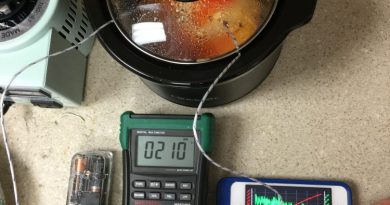Using a Digital Multimeter (DMM) to test LEDs
A digital multimeter with a Diode Test function can be used to test LEDs of various colors if the DMM applies a sufficient voltage potential at the meter leads to overcome the forward voltage requirement of the LED. The Diode Test function typically applies 2 mA of current to the diode under test. This current along with enough voltage to overcome the forward bias requirement is usually enough to illuminate most LEDs.
Traditional DMMs can easily forward bias a RED, GREEN, or YELLOW LED due to the relatively low forward voltage characteristic of these colors. However, BLUE and WHITE LEDs require more applied voltage to overcome the higher barrier voltage potential. A typical RED LED has a forward voltage spec of 1.6 volts, GREEN and YELLOW LEDs have voltage requirements close to this value. A WHITE LED is spec’d at 3.3 Volts but will actually begin conducting at about 2.5 volts. Therefore as long as the DMM applies at least 2.5 volts at the meter leads when in DIODE test mode, it may be used to test most LEDs. This applied voltage may be verified by using a second digital multimeter in Voltage mode to measure the output of the meter set to DIODE test mode. The LED is then placed across the test leads (observing the correct polarity) and see if the LED is illuminated. At low voltage outputs the LED may only illuminate very dimly.
Many modern DMMs are capable of supplying sufficient voltage to forward bias most LEDs and therefore may be used to test individual LEDs. ALL of the DMMs offered by Circuit Specialists are capable of applying enough voltage to perform this test.
